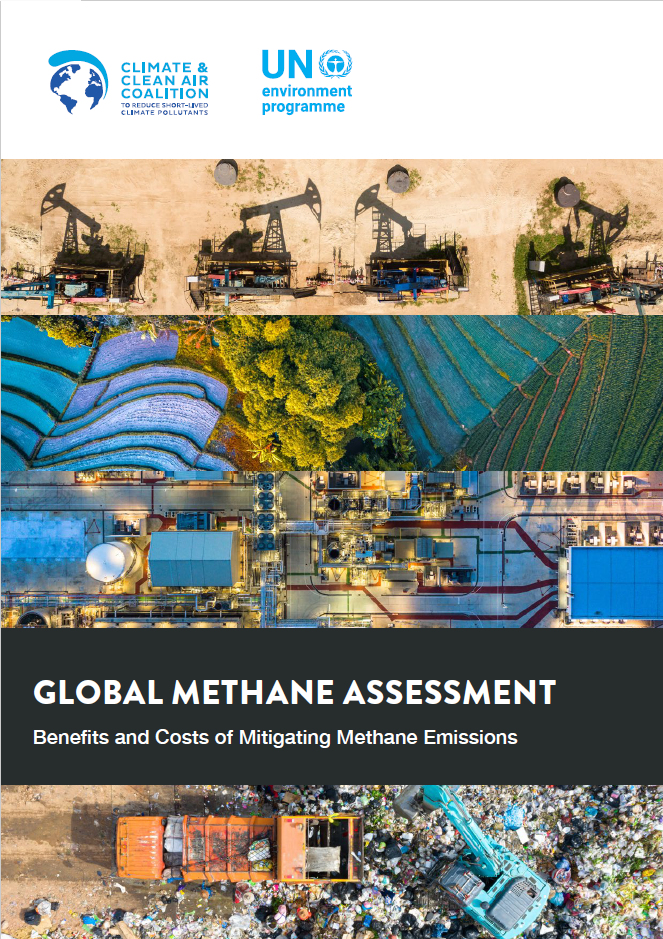
GLOBAL METHANE ASSESSMENT: BENEFITS AND COSTS OF MITIGATING METHANE EMISSIONS REPORT
RELEASED
CONTEXT
Report is released by the Climate and Clean Air Coalition and the United Nations Environment Programme (UNEP).
FINDINGS
Anthropogenic emissions represent roughly 60 per cent of the total methane emissions.
Anthropogenic methane emissions come primarily from three sectors: fossil fuels, ~35 per cent; agriculture, ~40
per cent; and waste, ~20 per cent.
Emissions from livestock are the largest source of agricultural emissions with enteric fermentation the
dominant process and cattle the dominant animal causing the emissions.
The extraction, processing and distribution of the three main fossil fuels lead to comparable emissions: gas and
oil each contribute ~34 per cent, followed by coal which contributes ~32 per cent of the fossil fuel methane
emissions.
METHANE EMISSIONS MITIGATION AS PER REPORT
FOSSIL FUEL SECTOR (OIL, GAS, AND COAL) UPSC PRLIMS 2014
With reference to ‘Eco-Sensitive Zones’, which of the following statements is/are correct?
1. Eco-Sensitive Zones are the areas that are declared under the Wildlife (Protection) Act, 1972.
2. The purpose of the declaration of Eco-Sensitive Zones is to prohibit all kinds of human activities, in those zones except agriculture.
Select the correct answer using the code given below.
a) 1 only
b) 2 only
c) Both 1 and 2
d) Neither 1 nor 2
ABOUT METHANE
It is a short-lived climate pollutant (SLCP) and a potent greenhouse gas ten of times more powerful than carbon dioxide.
It is responsible for 30% of global warming since the pre- industrial level.
lt contributes to the formation of ground-level ozone, a dangerous air pollutant.
o Upstream and downstream leak detection and repair.
o Recovery and utilization of vented gas – capture of associated gas from oil wells
o Coal mine methane management: pre-mining degasification and recovery and oxidation of ventilation air methane; flooding abandoned coal mines.
o Renewables for power generation -use incentives to foster expanded use of wind, solar, and hydro power for electricity generation
o Improved energy efficiency and energy demand management
WASTE SECTOR
o Solid waste management –
Residential – source separation with recycling/reuse;
No landfill of organic waste;
Treatment with energy recovery or collection and flaring of landfill gas;
Industrial – recycling or treatment with energy recovery
o Wastewater treatment
Residential – upgrade to secondary/tertiary anaerobic treatment with biogas recovery and utilization
Industrial upgrade to two-stage treatment, i.e., anaerobic treatment with biogas recovery followed by aerobic treatment.
o Reduced consumer waste and improved waste separation and recycling, improved sustainable consumption.
AGRICULTURAL SECTOR
o Livestock manure management
Treatment in biogas digesters
Decreased manure storage time
Improve manure storage covering
Improve housing systems and bedding
Manure acidification
o Agricultural crop residues
Prevent burning of agricultural crop residues.
o Reduced food waste and loss – strengthen and expand food cold chains; consumer education campaigns; facilitate donation of unsold or excess food.
